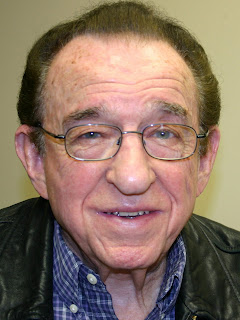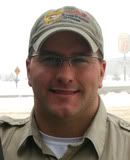
For more than 60 years Maybell Rentschler has lived in her farmhouse along Highway 25 heading toward DeSmet. Since 1942, Mary Remacle has enjoyed her home in Howard on Highway 34.
For both seniors, that longer home stay has been made possible through the Madison Home Care Services.
“I don’t want to leave here,” said Rentschler, 80, who resides in a wheelchair and has ramps going into her home that allows her to get in and out with ease. “Home Care helps me stay in the home longer.”
Remacle, who turns 98 on Sept. 1, agrees. “I appreciate some silence,” she said. “I don’t want to go where there is activity all day.” Remacle would rather spend time playing cards with those who stop by each week to visit her.
The Madison Home Care Services started in 1996. Organizers saw a growing need for those who could stay at home but would need some oversight to keep them from going back into the hospital and also staying in their homes and communities longer.
“Home Care is a link between client and physician,” said Lynn Landeen, who coordinates the program in Madison. “Going into a home you can see the whole spectrum of how they are managing meals, personal care and things you might not see at a clinic or hospital appointment. It gives you a broader picture of what is going on with the patient.”
Dotta-Jo Walker is one of the registered nurses that visit clients on a regular basis. She stopped in to check on both Rentschler and Remacle in mid-June. Along with providing necessary temperature checks, blood pressure checks and listening to the heart and lungs, Walker also asks questions to find out what is been happening with each’s life since the last time she stopped by. Walker visits Rentschler every other month and Remacle every two weeks.
Remacle related to Walker her experiences for the morning. “Things weren’t going the way I was hoping,” she tells Walker. But just having Walker stop by helped ease some of the worry for Remacle.
“I think people capable of taking care of themselves are better off in their own homes,” Remacle states. “I just like it here.”
Since 1996, Landeen has seen increased consumer awareness for the different options available for Home Care. “Families are looking at how they can keep their parents in homes as long as possible, but still have piece of mind knowing that they are being taken care of,” she said.
Madison Home Care Services has three RNs and three aides that travel in a 30-mile radius around Madison. Since Landeen has been in charge for the past seven years, she has seen continued influx of people being aware of home services.
“The numbers are growing because of the knowledge.”
In 2009, there were 3,425 home visits by registered nurses and aides. So far in 2010, there have been 3,217 home visits logging 30,681 miles on the road. Last year, RNs and aides traveled to Miner, McCook, Kingsbury, Lake, Minnehaha and Brookings counties.
Madison Home Care Services has six different objectives:
• provide continuing care from hospital to home
• shorten hospital stays or prevent re-hospitalization
• expedite recovery and return to regular activities of daily living
• reduce the cost of illness
• collaborate with other community agencies to facilitate providing care in the home
• assist with maintaining the home environment.
The Madison services also provide skilled nursing including IV therapy and hydration, wound care and dressing changes, post operative care, health education and medication compliance and education, as well as physical therapy, speech therapy, occupational therapy, health maintenance and homemaker services. Many of the clients also use meals on wheels or adult daycare one to five times a week.
Clients pay for services either by Medicare or through private contracts.
A typical senior citizen using the program is declining in health or maybe a family member is spending more time advocating for them, said Landeen. “There are more doctor visits because health is declining rapidly or they’re not taking medications properly,” she said. “By more controlled management with collaboration of healthcare providers and family members, it saves the payer source and utilizes less healthcare dollars.”
The Home Care program is also an extension of the community services that are provided. “It is a vital service to the local area and being a hub to the appropriate levels of healthcare,” Landeen said. “We work with physicians and other levels of community health services to enable a better quality of life in their usual home setting. It is also a piece of mind for family members.”
There are two major challenges. One is finding the right balance of hours that the patient needs. “We want to keep consistent staff because they become an extension of the family,” Landeen said. “They are usually flexible and we are flexible.”
The other challenge is recouping costs for travel time to make it a feasible program.
Landeen said the program will continue to grow because the State of South Dakota is focusing on using Medicaid dollars to keep people in their homes longer than in assisted living or nursing homes.
“People want to be in their homes as long as they can,” she said. “With the national and state focus in growing home and community-based services, it will only continue to grow. We need to change and grow with it.”

















